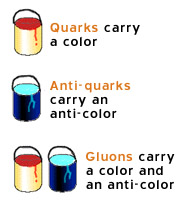

Specifically, Panero simulated the interactions of a large number of gluons at temperatures above 2 trillion degrees Kelvin (200 MeV) as would have occurred in the first microseconds after the big bang. He examined a wider temperature range than previous simulations, and he compared them with a specific large- N theory. So Panero–like others before him–ran computer simulations to check what happens as N is allowed to increase. The trouble is there’s no proof that they accurately represent real-world QCD. Large- N theories are not only attractive for their mathematical simplicity they may also provide a deeper understanding of quark behavior, says Marco Panero of the Swiss Federal Institute of Technology (ETH) in Zürich. Theorists have used the “large- N limit” to derive analytical results for quantities such as the viscosity and conductivity inside a hot mixture of quarks and gluons, which would be very hard to do using N = 3. In 1974, Nobel laureate Gerard ‘t Hooft of Utrecht University in the Netherlands claimed that one could effectively reduce the strength of some of these interactions–and thereby make QCD more tractable–by arbitrarily increasing the number, N, of color charges. This means that any calculation has to account for not only quark-gluon interactions but also gluon-gluon interactions. The theory is complicated by the fact that the particles that bind quarks together–the gluons–also carry a color. In the theory of quark interactions, called quantum chromodynamics or QCD, quarks have a property called color that is analogous to charge in electromagnetism. The paper also shows that one class of these models derived from string theory makes predictions that closely match the results computed in simulations using the three-color theory. Computer simulations described in the 5 December Physical Review Letters strengthen the case that multi-color theories provide roughly the same predictions as the three-color theory. Although experiments clearly indicate that there are just three types of “charge” (color) for quarks interacting through the strong nuclear force, calculations become much simpler when the number of colors is very large. In the minds of theorists, quarks come in a rainbow of different colors. This result lends support to an approach where quark interactions are analyzed by performing mathematically simpler calculations with string theory. Computer simulations confirm that increasing the number of colors in the theory of quarks for mathematical convenience does not affect the theory’s thermodynamic predictions.


 0 kommentar(er)
0 kommentar(er)
